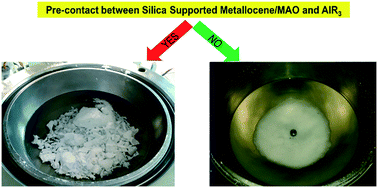Avoiding leaching of silica supported metallocenes in slurry phase ethylene homopolymerization
Abstract
Leaching of (n-BuCp)2ZrCl2/MAO catalyst from silica supports has been studied in slurry phase ethylene homopolymerisation by changing i) the polymerization protocol, ii) aluminum alkyl scavengers and iii) by adding butylated hydroxytoluene (BHT-H) along with aluminum alkyl scavengers. The impact of these three variations on the ethylene polymerization kinetics of the said metallocene/MAO/silica catalyst is also analyzed. The obtained results show that (n-BuCp)2ZrCl2/MAO does not leach from the silica support if pre-contact between the heterogeneous catalyst and aluminum alkyl scavenger is avoided. Furthermore, the addition of equimolar amounts of BHT-H and triisobutylaluminum (TIBA) into the reaction milieu generates Al(i-Bu)BHT2 which appears to be a non-interacting scavenger leading to no catalyst leaching (and therefore, no reactor fouling). This observation has been made by pre-contacting and avoiding the pre-contact between the silica supported (n-BuCp)2ZrCl2/MAO catalyst and the reaction mixture containing equimolar amounts of BHT-H and TIBA followed by the analysis of reactor conditions as well as the obtained polyethylene morphology. Molecular and physical properties of HDPE remain very similar by changing the polymerization protocol or the aluminum alkyl scavenger or by using BHT-H.



 Please wait while we load your content...
Please wait while we load your content...